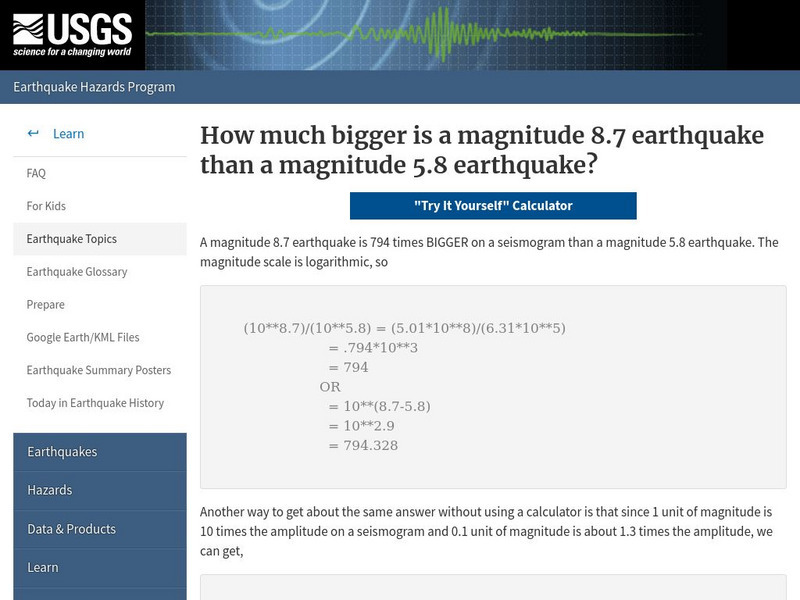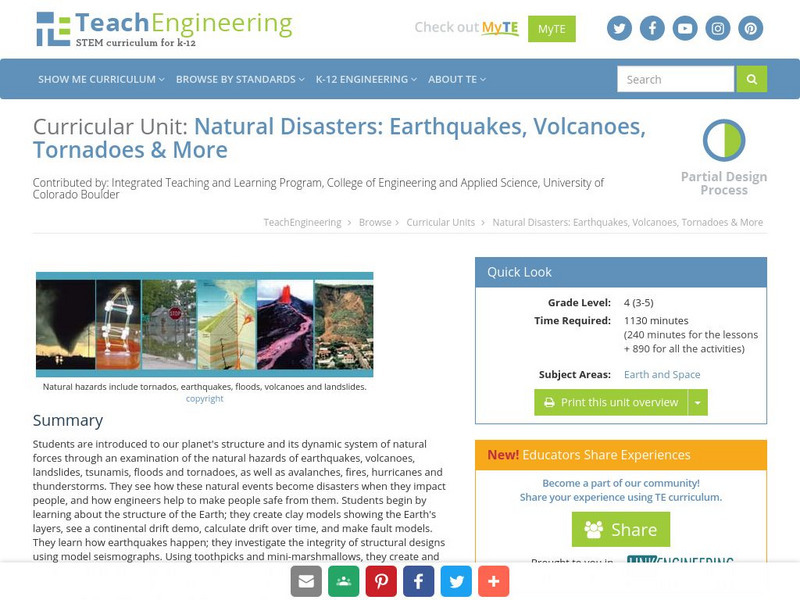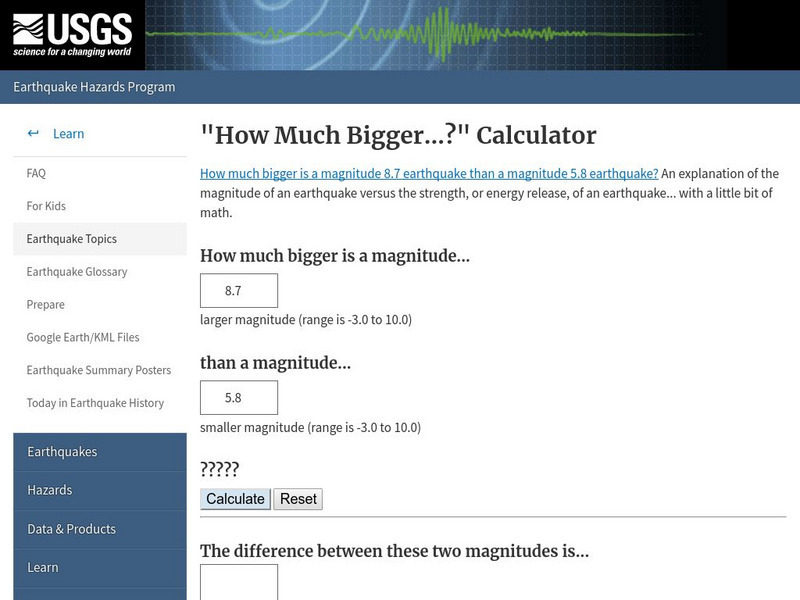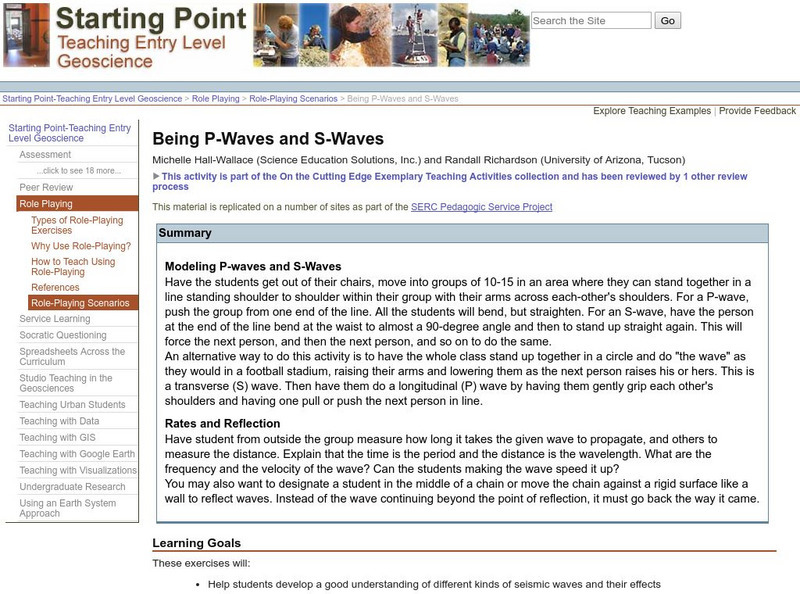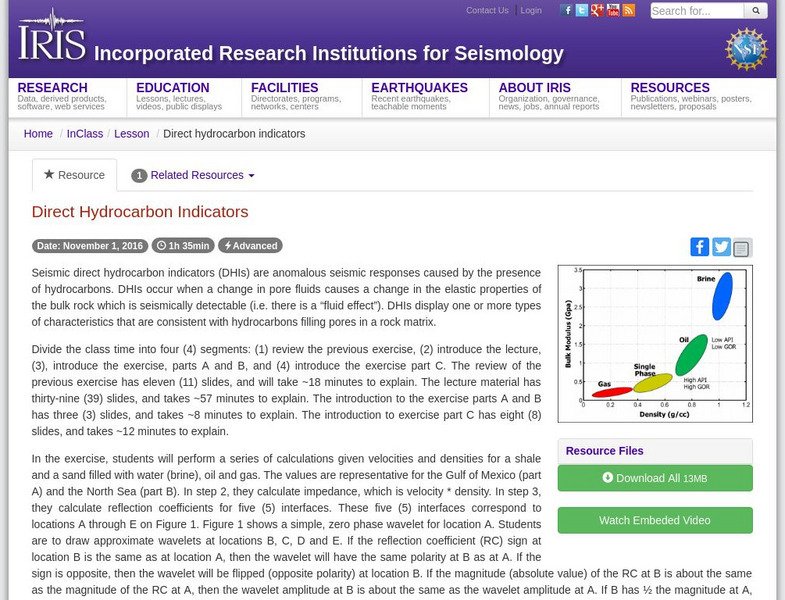Hi, what do you want to do?
US Geological Survey
U.s. Geological Survey: How Much Bigger?
This resource provides information about the magnitude scale, and allows users to try to figure out the difference between earthquake sizes.
Other
Nevada Seismological Laboratory: Seismic Waves
This resource describes the two different types of seismic waves and how they travel through the earth, offers diagrams of the waves, their speeds, and how seismograms are used to locate earthquakes.
Other
Ncedc: Make Your Own Seismogram
This site from NCEDC gives you an opportunity to "make your own seismogram" by choosing from a number of options on the screen.
TeachEngineering
Teach Engineering: Natural Disasters
Students are introduced to our planet's structure and its dynamic system of natural forces through an examination of the natural hazards of earthquakes, volcanoes, landslides, tsunamis, floods and tornados, as well as avalanches, fires,...
US Geological Survey
U.s. Geological Survey: How Much Bigger..? Calculator
A calculator to show the difference in magnitude between earthquakes. Understand that the Richter scale used to measure earthquakes is base-10 logarithmic scale.
Science Buddies
Science Buddies: How Fast Do Seismic Waves Travel?
Here's a geology project that uses historical seismograph data that you can collect from the comfort of your own computer. You'll use a web interface to a network of seismometers run by the Northern California Earthquake Data Center, at...
Incorporated Research Institutions for Seismology
Iris: Exploring the Earth Using Seismology
The paths of some seismic waves and the ground motion that resulted are shown in this poster.
American Geosciences Institute
American Geosciences Institute: Earth Science Week: Seismic Calendar
Students investigate how often earthquakes of various magnitudes happen within specific geographic regions.
TeachEngineering
Teach Engineering: Magnitude of the Richter Scale
In this activity, students will learn about the Richter Scale for measuring earthquakes. The students will make a booklet with drawings that represent each rating of the Richter Scale.
TryEngineering
Try Engineering: Shake It Up With Seismographs
During this lesson, learners learn how seismographs work and how technology has impacted the world by helping save lives from earthquakes. They will work in teams to design, test, and evaluate the results of their own seismographs, then...
Incorporated Research Institutions for Seismology
Iris: How Hard Does the Ground Shake During a Quake?
This activity asks students to demonstrate how hard they think the ground shakes during an earthquake.
Science Buddies
Science Buddies: Make Your Own Seismograph
A seismograph is a tool scientists use to record earthquakes and measure their strength. In this activity you will build your own seismograph using simple materials.
PBS
Pbs Teachers: Seismometer
Build an instrument for measuring movement to learn about how scientists measure the Earth's movement with a seismometer.
Science Education Resource Center at Carleton College
Serc: Being P Waves and S Waves
In this lesson students develop a good understanding of different kinds of seismic waves and their effects.
Incorporated Research Institutions for Seismology
Iris: Direct Hydrocarbon Indicators
This video lecture and accompanying exercises allow students to define a DHI and how to identify them, describe how seismic data are used to determine reservoir rock and fluid properties, and list the processing and modeling steps used...
Incorporated Research Institutions for Seismology
Iris: How Does a Seismometer Work?
An overview of the basic components of a seismometer and physical science principles behind its operation.





